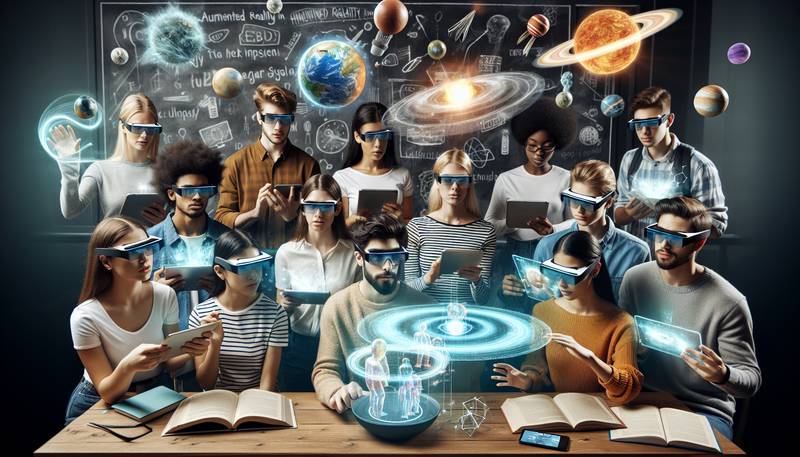Augmented Reality in Education: Transforming Learning

As technology continues to advance at a rapid pace, it's no surprise that it has found its way into the classroom. One of the most exciting and promising developments in educational technology is the use of augmented reality (AR). AR has the potential to completely transform the way we learn, making education more interactive, engaging, and effective.
What is Augmented Reality?
Before we dive into how AR is changing education, let's take a quick look at what augmented reality actually is. AR is a technology that overlays digital information onto the real world. This can be done through a variety of devices, such as smartphones, tablets, or AR glasses. Unlike virtual reality, which creates an entirely new digital world, AR enhances the world around us with digital content.
The Benefits of AR in Education
So, what makes AR so beneficial for education? For starters, it makes learning more interactive and engaging. Instead of passively reading from a textbook or listening to a lecture, students can actively participate in their learning by interacting with digital content in the real world. This not only makes learning more fun, but it also helps students retain information better.
AR also has the potential to make education more accessible. With AR, students can access digital content from anywhere, at any time. This means that even students in remote or underserved areas can have access to high-quality educational resources.
AR in the Classroom
One of the most exciting ways that AR is being used in education is in the classroom. Teachers are using AR to bring lessons to life in a way that was previously impossible. For example, in a science class, students can use AR to explore the human body in 3D, or in a history class, students can virtually visit historical landmarks. This type of immersive learning experience helps students better understand complex concepts and makes learning more memorable.
AR is also being used to create interactive textbooks. Instead of just reading about a subject, students can use their smartphones or tablets to scan a page and access additional digital content, such as videos, animations, or interactive quizzes. This makes the textbook more than just a static resource, but an interactive learning tool.
AR for Special Education
AR also has the potential to make a huge impact on special education. For students with learning disabilities or other special needs, AR can provide a more personalized and accessible learning experience. For example, students with visual impairments can use AR to access digital content with audio descriptions, and students with autism can use AR to practice social skills in a safe and controlled environment.
Challenges and Considerations
While the potential for AR in education is immense, there are still challenges to be overcome. One of the biggest challenges is the cost of AR technology. While the cost is coming down as the technology becomes more widespread, it can still be prohibitively expensive for some schools and districts.
Another challenge is the need for teacher training. In order for AR to be used effectively in the classroom, teachers need to be trained on how to use the technology and integrate it into their lessons. This requires time and resources that not all schools may have.
Finally, there are also privacy and security concerns when it comes to using AR in education. Schools and educators need to be mindful of how student data is being collected and used, and ensure that appropriate safeguards are in place to protect student privacy.
The Future of AR in Education
Despite these challenges, the future of AR in education looks bright. As the technology continues to improve and become more affordable, it's likely that we'll see even more innovative uses of AR in the classroom. From virtual field trips to interactive homework assignments, the possibilities are endless.
AR has the potential to not only change the way we learn, but also to make education more equitable and accessible for all students. By transforming the classroom into an interactive and immersive learning environment, AR is helping to create a new generation of engaged and curious learners.
Conclusion
In conclusion, augmented reality is revolutionizing the way we learn. With its ability to make learning more interactive and engaging, AR is transforming education from a passive experience to an active and immersive one. As technology continues to advance, we can expect to see even more exciting developments in AR education. So, get ready to put on your AR glasses and step into the future of learning!


